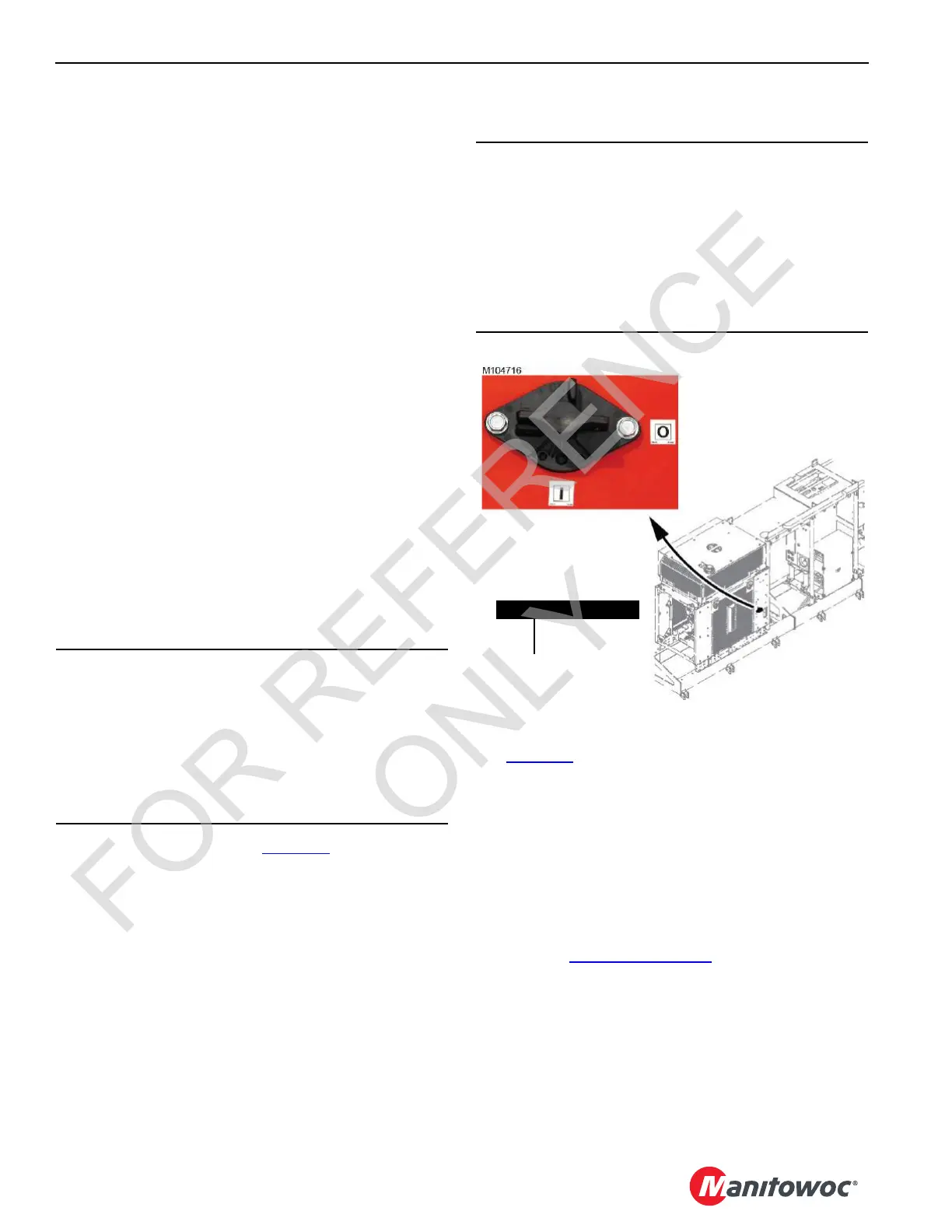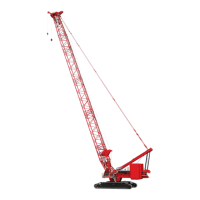POWER TRAIN MLC80A-1/MLC90A-1/MLC100A-1/MLC100-1 SERVICE/MAINTENANCE MANUAL
7-4
Published 10-09-2020, Control # 259-06
BATTERY MAINTENANCE
Quarterly or Every 500 Hours of Engine Operation
(whichever occurs first)
• Thoroughly clean the batteries with a baking soda/water
solution.
• Clean the posts and terminals. The posts can be lightly
coated with petroleum jelly to prevent corrosion.
•
Check the electrolyte levels. If required, add additional
electrolyte to bring all levels to the bottom of the vent
wells. DO NOT OVERFILL. If the batteries require
topping off while in service, add distilled water — DO
NOT ADD
ACID.
• Replace frayed, broken, or corroded cables.
• Replace the batteries if their containers are cracked or
worn to the point that they leak.
• Ensure there is tight contact between the clamp
terminals and battery posts.
• Make sure that the hold-downs are in good condition.
Replace any faulty parts.
• Make sure the hold-downs are tight enough to prevent
battery movement, but not so tight as to cause distortion.
• Make sure the battery retaining bars are installed.
• Makes sure the battery box cover is installed.
BATTERY DISCONNECT SWITCH
The battery disconnect switch (Figure 7-3) is located on the
engine enclosure on the right side of the rotating bed. It can
be locked with a padlock in either position, ON or OFF.
The switch disconnects the positive side of the batteries from
the crane’s electrical control system.
Turn the switch handle clockwise to connect (turn on) the
batteries to the electrical control system.
Turn the switch handle counterclockwise to disconnect (turn
off) the batteries from the electrical control system.
Use the disconnect switch for the following situations:
• When servicing the crane’s electrical control system
• To help prevent the batteries from discharging when the
crane is stored for extended periods of time
• To prevent the crane from being started by unauthorized
personnel
BATTERY CHARGER (OPTIONAL)
See Figure 7-4 for the following procedure.
An optional auxiliary power unit (APU) equipped with a
5 KW, continuous duty, 60 HZ AC generator and a DC
charging system is available from Manitowoc Cranes for the
following operations when the crane engine is off:
• To charge the crane batteries
• To power the cold weather heaters
• To power any AC lighting on the crane.
If an alternative method of charging is desired, follow the
instructions in Charging on page 7-3
.
The APU can be started with the switch outside the cab.
If the crane is not to be used for more than a few days, the
charger should be plugged into a 240 V
AC
source.
There is a 10 A fuse on the DC output. For charger
troubleshooting and maintenance information, refer to the
manufacturer’s service manual.
CAUTION
Engine Damage
To avoid possible engine fault codes and undesirable
operation, make sure engine ignition switch has been off
five minutes before disconnecting batteries.
Do not rely on this switch to protect crane’s electronic
systems when welding. Disconnect battery cables at
batteries before welding.
CAUTION
Avoid Control System Damage!
Before welding:
• Disconnect the battery cables at the batteries.
• Disconnect the cabling from any control modules that
are in the vicinity of the welding.
Do not rely on the battery disconnect switch to protect the
crane’s electronic control systems when welding.
Item Description
IOn
OOff
FIGURE 7-3

